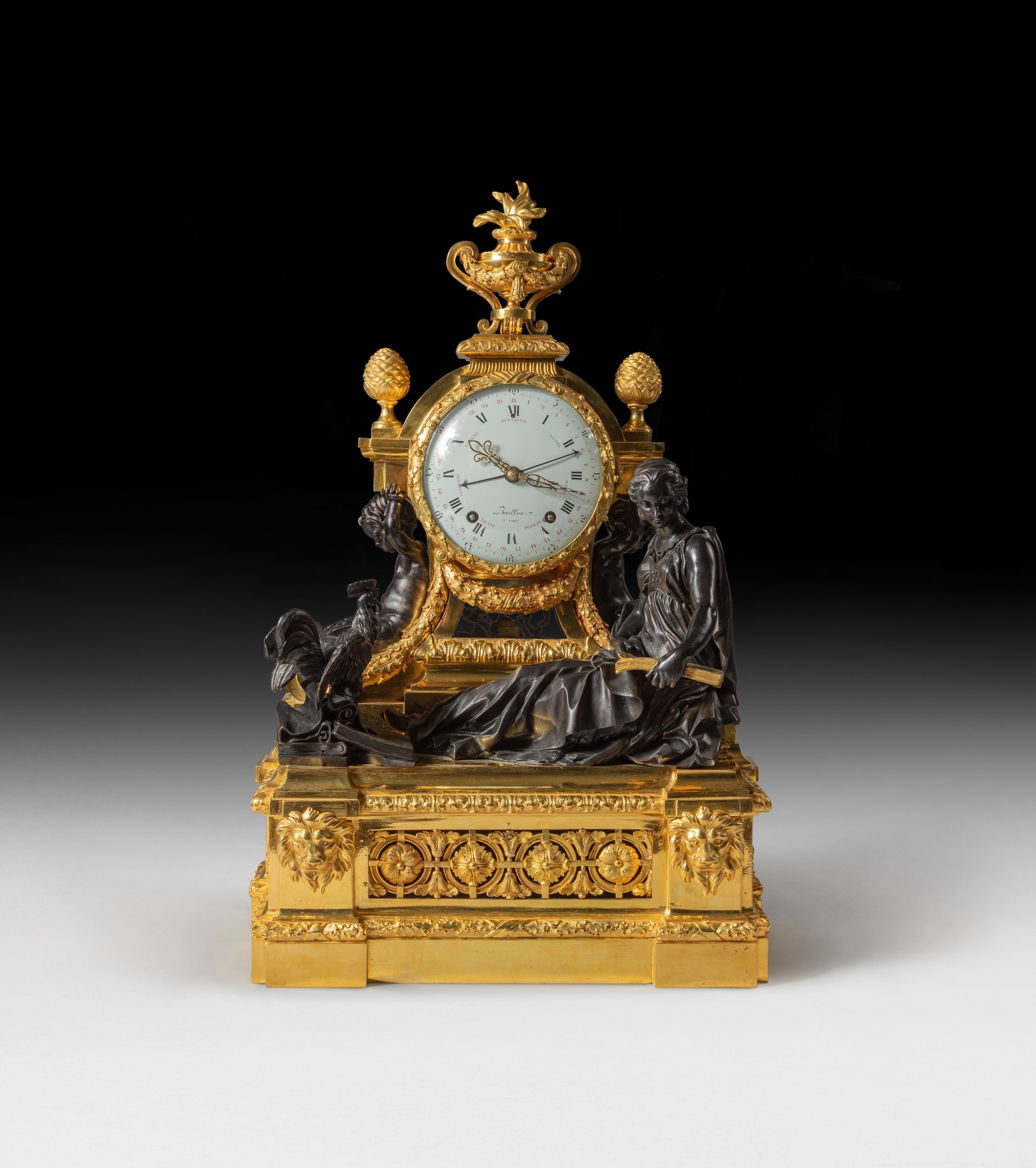
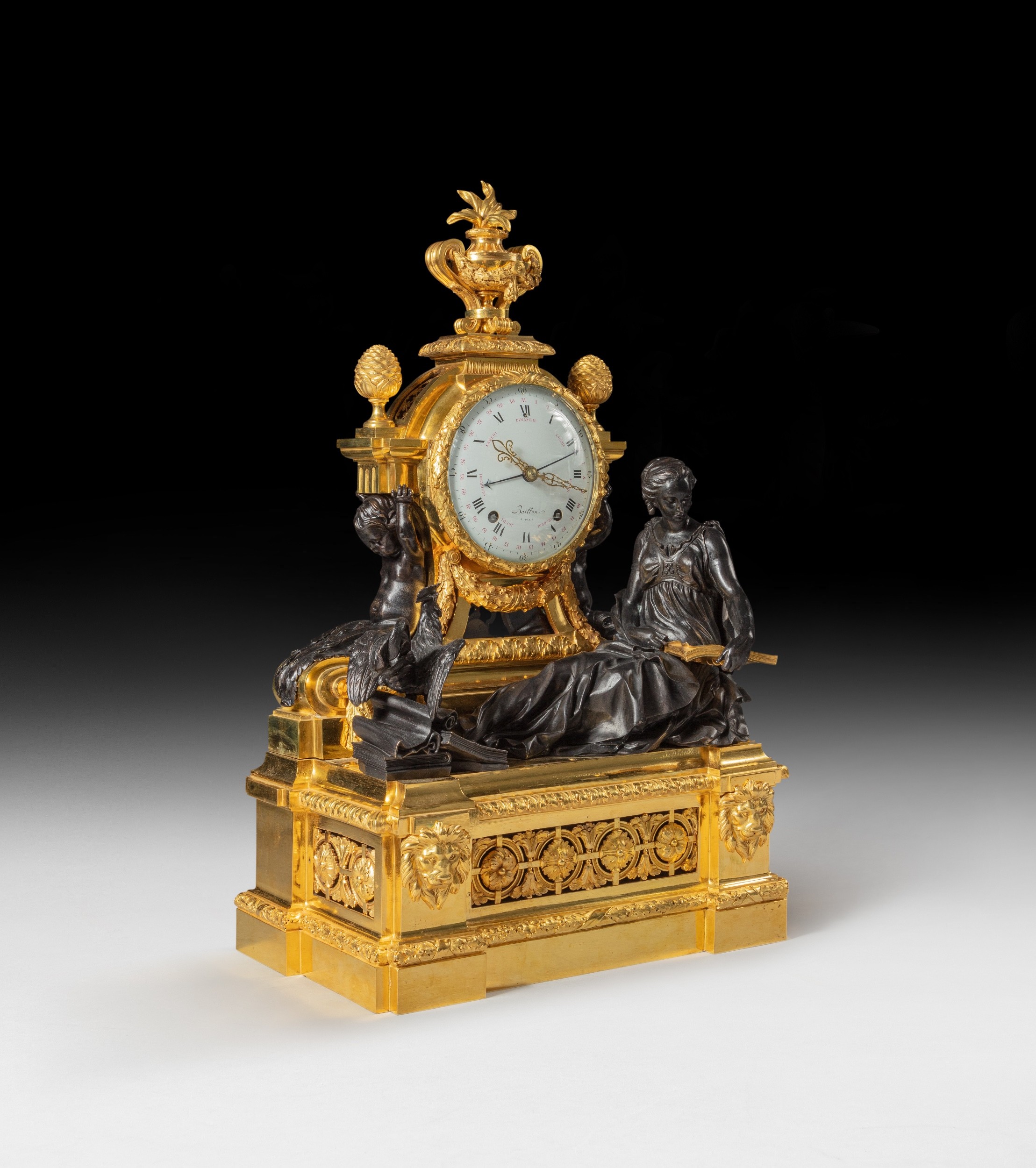
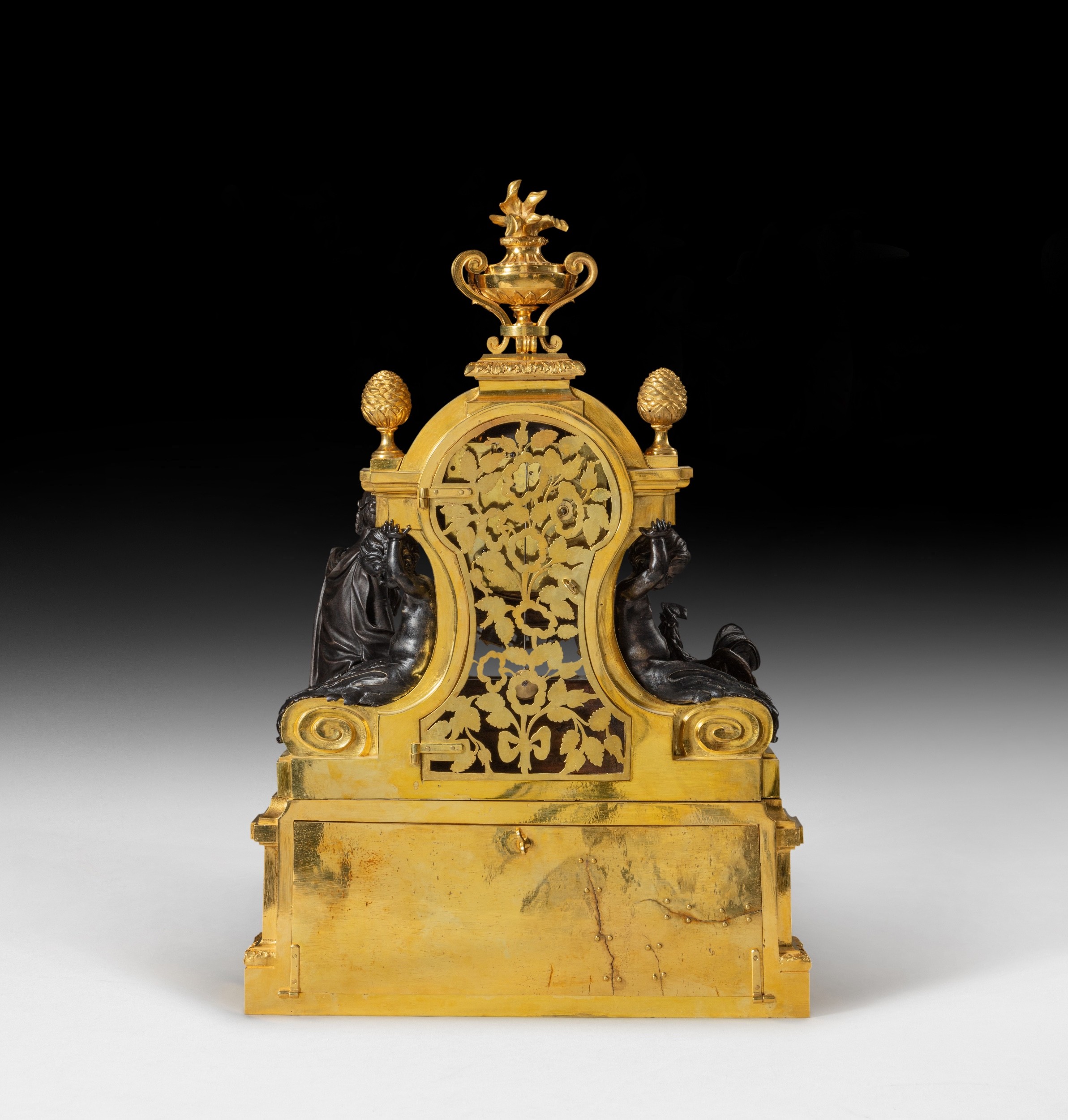
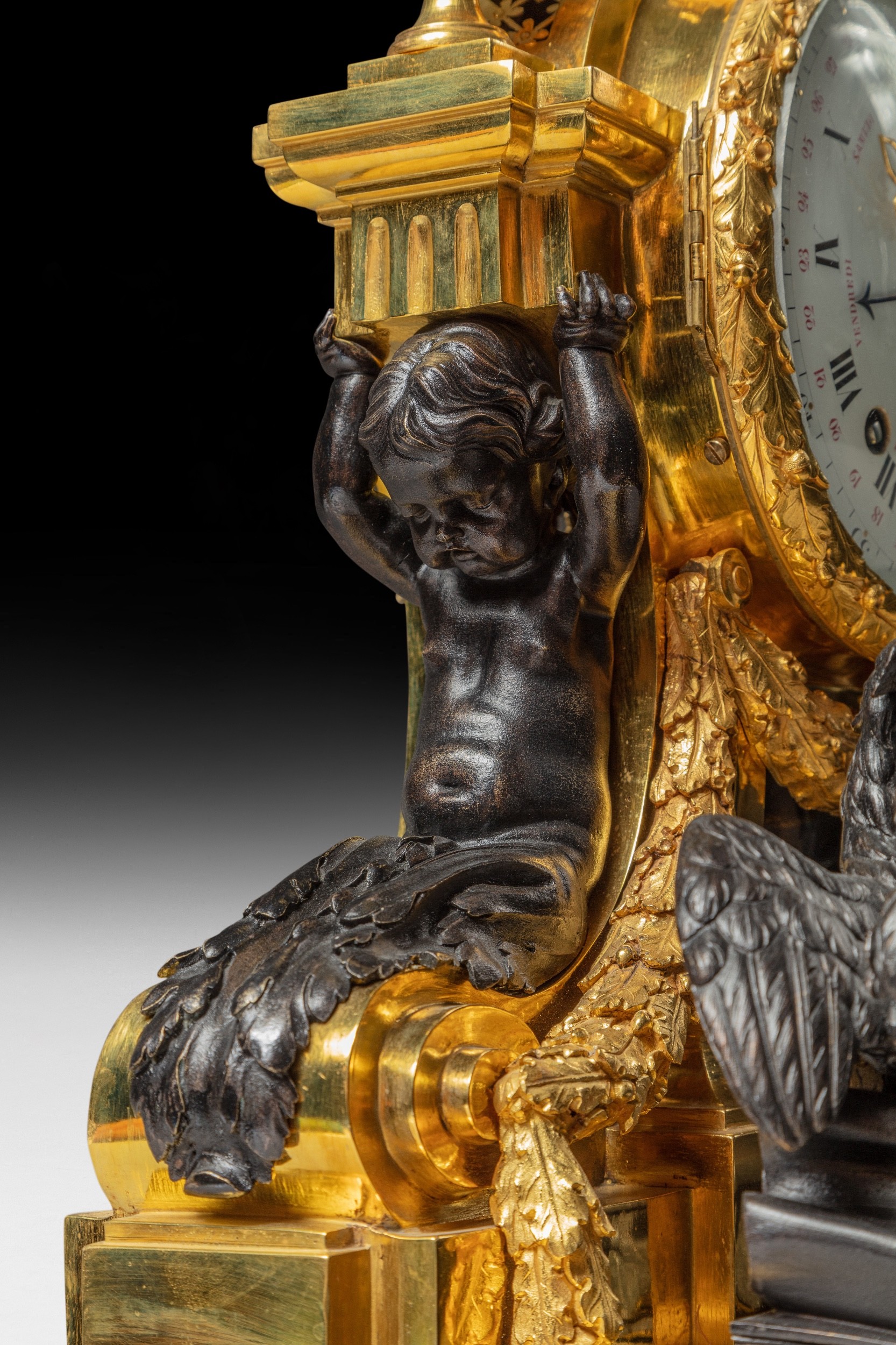
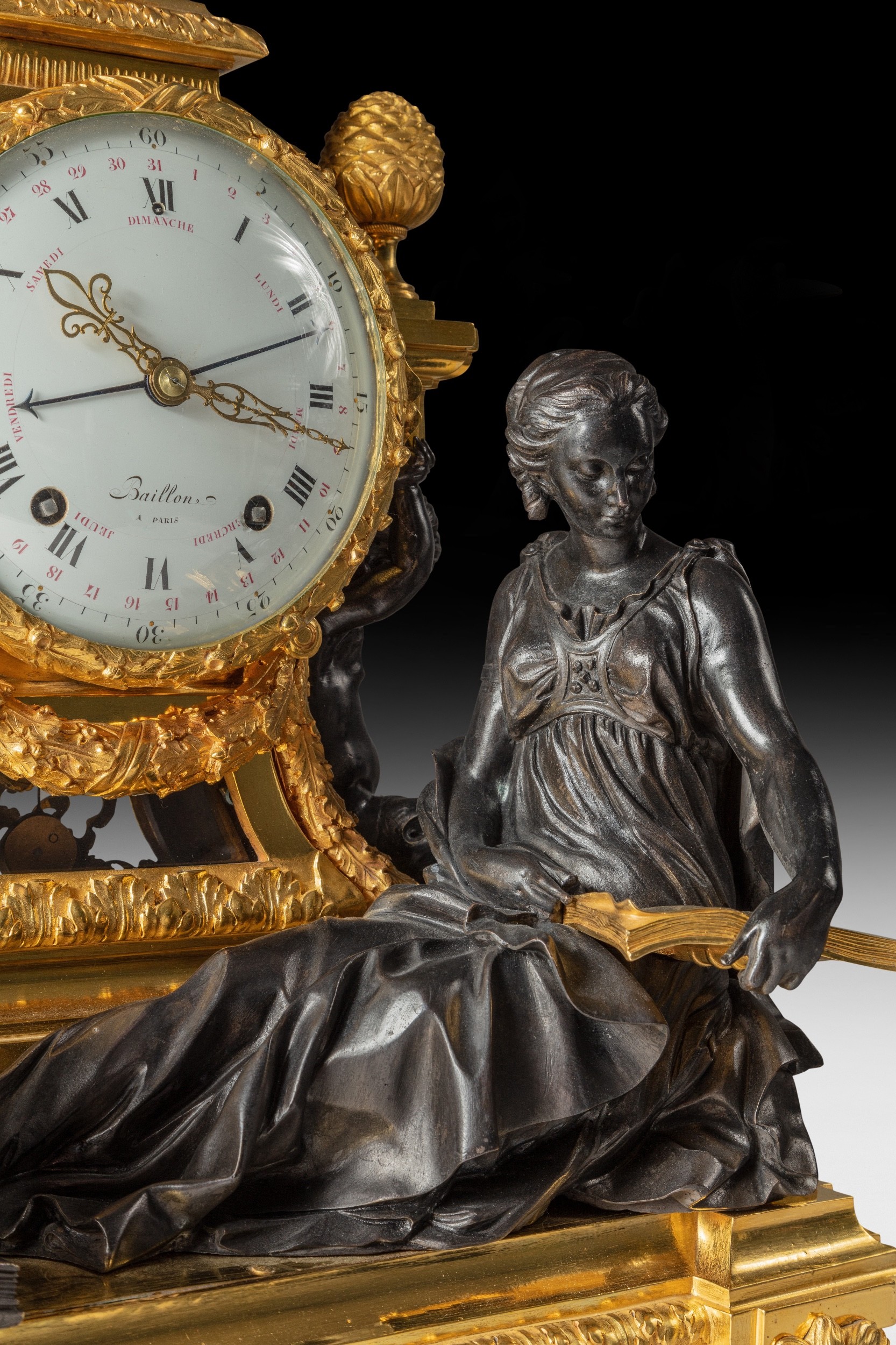
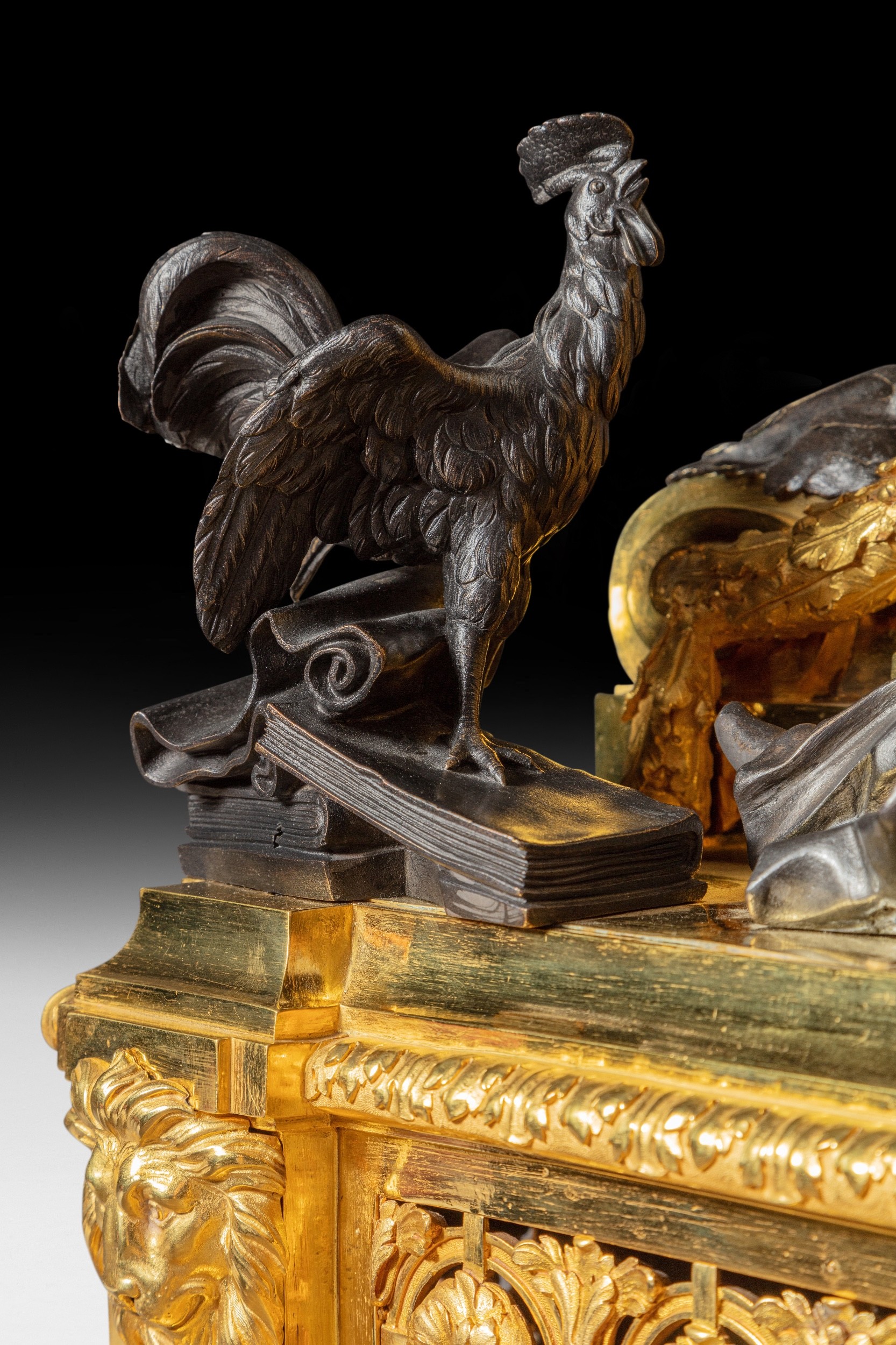
1765






Literature:
This model draws its inspiration from the clock known as "à l'Emploi du Temps", offered by Madame Geoffrin to Diderot (cf. C. Baulez, "La Pendule à la Geoffrin, a successful model" in L'Estampille - l' Object of Art, n°224, April 1989, pp. 34-41). The success of the so-called "Geoffrin" clock was not denied throughout the second half of the 18th century and certain bronziers did not hesitate to adapt it by reinterpreting it, such as Jean-Joseph de Saint-Germain who returned the dial in the center of the composition and slightly straightened the figure of the Etude (cf. J-D. Augarde, "Jean-Joseph de Saint-Germain" in H. Ottomeyer and P. Pröschel, Vergoldete Bronzen, Munich, 1986, vol. II, p.532, Fig. 12). The figure of the Study adorning the clocks of Saint-Germain is undoubtedly inspired by the work of the sculptor Louis-Félix de La Rue or Louis-Claude Vassé from the collections of Ange-Laurent Lalive de Jully (cf. C. Baulez, op.cit., pp. 40-41). A very similar one but with not such a good dial was donated in 1929 by Ogden Mills to the Metropolitan Museum in New York (inv. 29. 180.3)
Jean Baptiste Baillon:
Jean-Baptiste Baillon was a very famous, and at that time the largest, watchmaker in Paris in the 18th Century, he became a master watchmaker in 1727, his business was first on the Place Dauphine later in the Rue Dauphine. A private factory was located in Saint-Germain-en-Laye, where different watchmakers worked for him, which was quite exceptional at that time. Baillon was a watchmaker to the Queen of France, Maria Leczinska in1738, “Valet de Chambre de la Reine-Ordinaire Watchmaker” by 1748, “Premier Valet de Chambre de la Reine”, and from about 1770 watchmaker at the court of Queen Marie Antoinette, “Premier Valet de Chambre and Valet de Chambre, Watchmaker Ordinaire de la Dauphine” to Marie-Antoinette. He died in 1772.
| Dimensions | CM | Inches |
|---|---|---|
| Width: | 29.5 | 11.5 |
| Depth: | 18 | 7 |
| Height: | 48.5 | 19 |